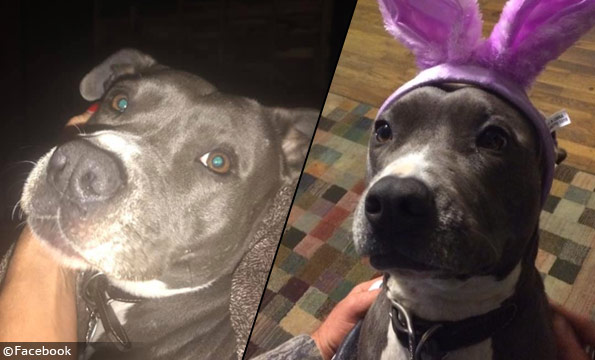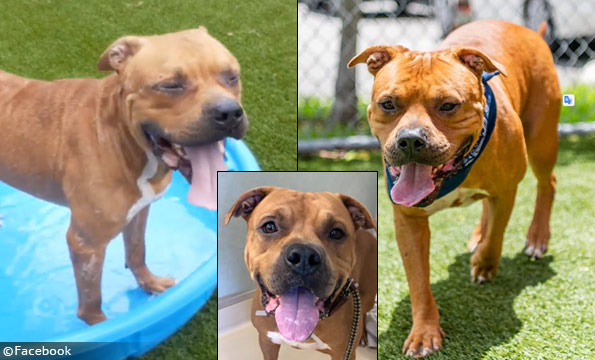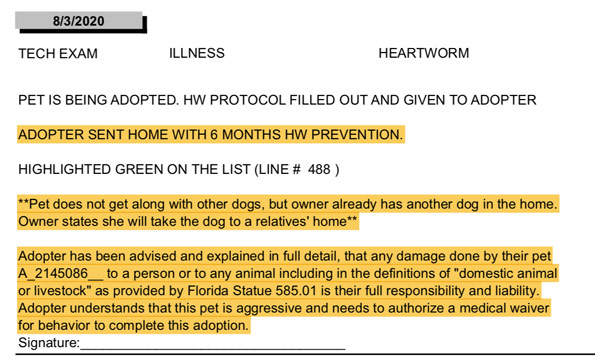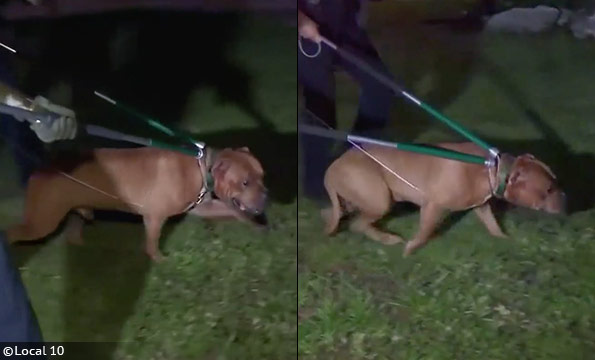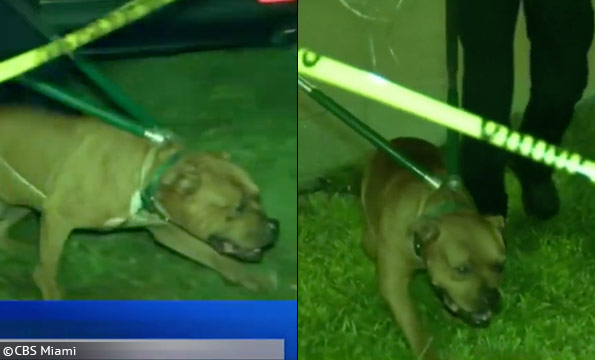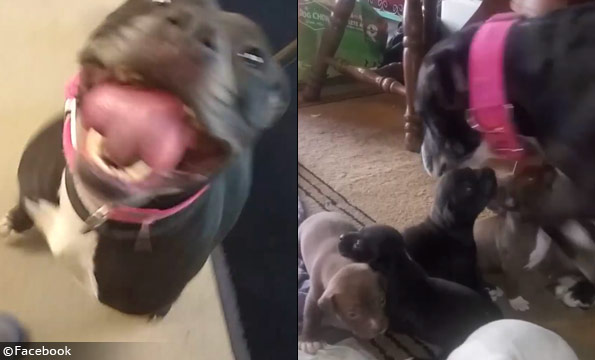Steffen Baldwin, a Self-Appointed "Dog Whisperer"

Steffen Baldwin, 39, faces 42 charges related to animal abuse and fraud in Ohio.
UPDATE 03/13/25: On January 2, 2025, Judge Daniel Hogan found Steffen Baldwin guilty on 32 felony counts; he had stood trial on 39 counts. He was found guilty of one count of bribery, 12 counts of telecommunications fraud, four counts of tampering with records, 11 counts of cruelty to animals, three counts of grand theft, including a firearm, and one count of engaging in a pattern of corrupt activity. On March 13, 2025, Judge Hogan sentenced Baldwin to 15.5 years in jail.
The next day, Judge Hogan's Journal Entry of Sentence was entered on the docket, which discusses applicable factors. Of the nine relevant factors indicating that the offender's conduct is more serious than conduct normally constituting the offense, Hogan found that six applied to Baldwin, including, "the victim of the offense suffered serious physical, psychological, or economic harm" and the offender committed the offense "as a part of an organized criminal activity."
UPDATE 05/02/21: On March 29, 2021, a superseding indictment was filed against Steffen Baldwin. Since the initial indictment, 14 misdemeanors were dropped during court proceedings due to statute of limitations. Eleven of those counts -- all animal cruelty charges -- have now been re-added to the amended indictment as felony animal cruelty charges (F5). The remaining three misdemeanors are currently on appeal. Baldwin is now facing 39 felony charges, up from 28.
Dog Whisperer Charged
Union County, OH - On July 23, Steffen Evan Baldwin (aka Steffen Finkelstein), 39, was arrested in California and taken into custody. In the days that followed, a 42-count felony indictment was unsealed in Union County, Ohio that charged Baldwin with dozens of crimes related to animal cruelty and fraud. To his fans, Baldwin is known first as a "pit bull breed advocate," then as an expert animal trainer and rescuer. The indictment ties Baldwin to the deaths of 18 dogs.
Prosecutors say Baldwin carried out the 42 charges between November 2012 and February 2020 and include: engaging in a pattern of corrupt activity, a felony in the first-degree, bribery, 15 counts of felony telecommunication fraud, 13 counts of animal cruelty, six counts of felony tampering with records, three counts of felony grand theft -- including stealing a firearm from his own nonprofit organization1 -- two counts of falsification and one count of impersonating a Peace Officer.
Prosecutors say Baldwin's goal was "stardom." If convicted on all charges, Baldwin could face over eight decades in prison.
Baldwin was included in our 2019 expose of Luke Westerman, who currently faces 19 felonies for security law violations. Westerman's court case remains pending in Franklin County, Ohio. Both Westerman and Baldwin -- close friends and cut from the same cloth -- conned their way into the pit bull advocacy and no-kill spheres by creating false online personas, often with the help of professional photographers, peddling sham resumes, sham companies and sham websites.
In our expose of Westerman, we stated that Baldwin fled Ohio in 2018 -- we were right. Court filings show that in 2018, Baldwin "left the State of Ohio knowing that a criminal investigation was underway. The investigation of this case began in June 2017." By the latter part of 2017, several individuals had revealed to him they had been interviewed by officers, according to the filings. Baldwin fled to California in February 2018, hoping to leave his myriad of crimes in Ohio behind.
"In his social media accounts, the Defendant made threats to harm the investigating officer, describing how 'stressed out, nauseous and angry' he was about the investigation. The Defendant searched the Internet for information on including 'first time offender 3rd degree felony,' 'nonprofit fraud penalties in Ohio,' and 'theft by deception,' among other topics, which demonstrate his knowledge about the pending investigation." - Court of Common Pleas, Union County
Union County Prosecutor Dave Phillips told the Marysville Journal-Tribune that when it came time to serve the indictment and arrest Baldwin in California, police invited Baldwin to conduct an animal training for their department. When Baldwin arrived, U.S. Marshals arrested him. In early August, Baldwin was transported by U.S. Marshals to Ohio. On August 5, Baldwin was arraigned in the Union County Court of Common Pleas in Marysville, Ohio. His bail was set at $200,000.
Campbell police detective Jim Conroy said the initial police report was filed in June 2017. From there, the evidence kept stacking up. "Every rock I turned over, there was something there," he said. "Every hole I went into led to more holes." He said he examined a total of 450,000 social media posts for the case. The multi-agency investigation included agents from the Ohio Bureau of Criminal Investigation, Ohio Department of Public Safety and Union County sheriff’s office.
Combined, the agencies spent more than 13,000 hours on the case, which resulted in the 42-count felony indictment. - Columbus Dispatch
Det. Conroy said Baldwin's motive was clear -- he sought stardom. Baldwin, just like Westerman, found a way to connect himself to as many animal organizations as he could, chiefly pit bull advocacy and no-kill groups, in order to build up his reputation as a pit bull breed advocate and an expert "animal behaviorist." Part of this included him seeking a cable TV show. At least four production companies signed Baldwin with the goal of pitching him to Animal Planet, Conroy said.
How the Scam Worked
Baldwin's scheme was to tell people he was taking in unredeemable dogs to rehabilitate and rehome them, Phillips said. "Then he would raise money for these dogs -- for their care, for their adoption, for their training --- but had allegedly euthanized them." Baldwin had "a pattern of lying to people to raise money," he said. Funds he raised for the dogs, even after they were dead, were used for personal expenses including, gifts for his girlfriend and strip clubs, Phillips said.
Recent fundraisers can be seen here and here -- both regard reactive pit bulls being sent to his California facility. A fundraiser is started for a high-risk dog to be sent to Baldwin's "last chance" rehab ranch. $4,000-$7,000 will get the dog into his 8-week intensive training program. In Ohio, when Baldwin's price point was as low as only $1,000, 18 of these dogs did not make it out alive, and Baldwin continued to raise funds for some of these dogs after he had them euthanized.
Baldwin took advantage of false hope -- there is no sustainable manner to rehabilitate dogs with extreme or impulsive aggression. The pit bull rescue and no-kill communities seized the illusionary belief that Baldwin had "mythical" abilities to "save" these reactive dogs. Police in Ohio tie Baldwin to the deaths of 18 dogs, which investigators characterized as "needless" in the indictment. However, Phillips believes the total number of deaths exceeds the number of indictments filed.
Why Should We Care?
Many of the reactive dogs Baldwin allegedly rehabilitated were recycled back into our communities after exiting his intensive "shelter diversion" program. We also care because Baldwin's fraud prolonged the false hope that these dogs could be "cured" of impulsive aggression, the same false hope that the "save them all" rescuers cling to. Responsible people would have put these types of dogs down for unstable behavior instead of sending the dog away to be magically rehabilitated.
The deaths of these irredeemable dogs were "needless" in the sense that these dogs had owners or interested parties, and the animals could have been returned to them with the admission that Baldwin was unable to rehabilitate them. Baldwin chose to lie instead. The reason why many of these dogs, if not all of them, were secretly killed was so that Baldwin could maintain his animal "behavior expert," reactive dog rehabilitator image and continue to use the dogs to fundraise.
In serving his own desire to be a superstar, Baldwin perpetuated and amplified the dangerously wrong idea that dogs with inherent impulsive aggression can be rehabilitated and turned into safe family pets.

A creepy Steffen Baldwin seen in December 2017 and the mug shot taken after his arrest.
Thwarted by "Remi's" Owner
While Baldwin started his life afresh in California, some of his victims in Ohio demanded justice. Litsa Kargakos, the owner of "Remi," is how the police investigation began. She paid Baldwin $1,000 to work with Remi. After months of Kargakos trying to check on the dog's progress, Baldwin fabricated a story that he euthanized the dog after Remi had attacked and killed another dog. Kargakos did not believe Baldwin's timeline of events and took her concerns to police.
For three years, Kargakos never gave up. The first post on her Justice 4 Remi Facebook page was May 6, 2017. The next month, she wrote: "We thought he went to the Dog Whisperer instead he went to the Dog Murderer." During this time, Kargakos also warned many pit bull-centric rescues and organizations, but none cut their ties to Baldwin. Not only did the pit bull community worship a fake "rehabilitator," when they were told he was fraudulent, they flat out ignored it.
"As many of you know, I posted, text messaged, emailed, and shared Remi’s story everywhere I could to alert others to what had happened to Remi. We didn't know the whole truth until much later when the police became involved. It was plain as day that the story that was being told by Steffen Baldwin did not add up. But, Steffen's network continued to grow and they all chose to ignore Remi’s story and not even attempt to ask questions about what really happened. Some of the bigger names that were aware of Remi and still continued to partner and do business: Best Friends Animal Sanctuary in Utah, Rebecca Corry from Stand up for Pits foundation, Austin Pets Alive, Summer Parker, Saskia Boisot, Bark Box, Huffington Post, Pima Animal Control ... Also, I know that people reached out to Gordon Shell as well (his "brother from another mother" as he would say). All these people who claim they fight for animals and are rescuers or stand behind rescue as a company. Not ONE of them cut ties with Steffen after they knew about Remi and some even sent him 'dangerous' or biting dogs to 'rehabilitate.' So, what does that tell you about them?" - Litsa Kargakos
Kargakos' post tells us there will be more Baldwins in the future. The pit bull rescue and no-kill communities are riddled with false hope. There is a primary reason for this. These groups refuse to have honest conversations and policies about behavioral euthanasia. The branded tagline of Best Friends, "Save them all," is not realistic, nor is it possible. Furthermore, the role of the "magical pit bull rehabilitator" is unsustainable. It's just a matter of time before the jig is up.
Like many who have come before him -- Leah Purcell of Spindletop and Steve Markwell of Olympic Animal Sanctuary just to name two -- with or without the 42-count felony indictment, Baldwin was already headed down a path of doom: a "sanctuary operation" of "reactive" dogs with bite histories. Baldwin knew this too. While we cannot confirm the number of dogs at his California property at the time of his arrest, comments on social media estimated there were 40 to 50 dogs.
The indictment states that Baldwin committed many serious crimes. Most notably, engaging in a pattern of corrupt activity, a first-degree felony. Baldwin exploited people's trust and did so for financial gain. Our hope is that there is a trial by jury -- no plea deal. A trial will air Baldwin's dirty laundry, his deceptive schemes to achieve stardom, and with any luck, will show the public and donors that the "reactive dog rehabilitation" routine is a magnet for con artists and hoarders.
Our Examination
As we stated in our expose of Luke Westerman, "We have seen a number of pit bull advocates and rescuers rise and sink. The 'emotionally charged' pit bull advocacy and rescue spheres are easily exploitable. Thus, fraud and facades are commonplace." Our goal in examining Baldwin's background was to find out just how easy it is for an "anti-BSL campaigner" and "bull breed advocate" to become a rising star dog "behavior expert" all while simultaneously killing pit bulls.
Baldwin routinely hobnobbed with the upper echelon of no-kill, while he killed pit bulls he promised to rehabilitate. How did he get away with that?
Our examination also analyzes the "three amigos," Baldwin, Westerman and former MML fighter Gordon Shell, who starred in the 2013 documentary film, "The Dogs' Fighter." It was released to Vimeo On Demand and Amazon Prime. It was Shell that showed both how to achieve celebrity through "animal advocacy" (virtue-signaling tee-shirts, social media, protests, and more). Baldwin, apparently, wanted to be a "D-lister" just like Shell and latched onto him like a proverbial pit bull.2
The Early Years - Resume Lies
From 2008 to 2013, Steffen Baldwin served as the Executive Director of the Union County Humane Society. The indictment indicates that Baldwin lied on his resume to obtain this position. Though Baldwin removed his Linkedin page, it claimed he obtained a Bachelor's degree in Philosophy at West Point in a 3-year period, while simultaneously serving in the U.S. Army. Court filings from Union County prosecutors state that Steffen's "military record is not as he suggests."
In May 2013, Baldwin started the Animal Cruelty Task Force of Ohio (ACT Ohio). Within a year, he had started the Reactive Rover Rehab Program and began billing ACT Ohio as a "last chance" destination for death row dogs. This is also when Baldwin began to kill dogs. Between August and December 4, 2014, he euthanized at least two dogs, according to the indictment. A few months earlier, Baldwin was featured with a pit bull in the national campaign, "Show Your Soft Side."
The photo-shoot by Brian Batista with "Chesty" the pit bull essentially launched Baldwin into pit bull advocacy celebrity. At this point, he became a one-man show "rescuing" animals and "saving" reactive pit bulls in his self-created role as the "humane agent" of ACT Ohio. Though Baldwin had plans of raising $120,000 for 2014, it seems it never materialized. Just four years later, the IRS would revoke ACT Ohio's exempt status for failing to file a return for three consecutive years.
The Westerman Years (2015)
Between 2015 and 2017, Baldwin and Westerman were thick as thieves in Ohio. During this 3-year period, Baldwin racked up 34 charges, 23 of which are felonies, and was accused of killing at least seven dogs. This is also when Baldwin began a bromance with "D-lister" Gordon Shell to create one or more pilot TV episodes to shop around. Investigators said that Baldwin eventually signed with at least four production companies with the goal of pitching him to Animal Planet.
The indictment states that on April 23, 2015, Baldwin committed two counts of "unjustifiable" pain to an animal. Six days later, amidst fanfare, Baldwin and Westerman launched a PAC, Ohioians Against Breed Discrimination (OABD), in the hopes of raising $5 million dollars to end BSL in Ohio. They raised just $635 and never reported the earnings to Ohio. In June, Baldwin and Shell spoke at the 2015 Pibble March, while Westerman cooked up an anti-BSL promotional video.
Four days after filming the video with Westerman, Baldwin killed another dog, according to the indictment. A week later, photographer Brian Batista captured Steffen "showing Belle what love is supposed to be," followed by Baldwin's backside, and his now ill-famed cap, "ACT Ohio Humane Agent." Baldwin got significant publicity mileage out of "Belle," including a gush piece by Arin Greenwood, a pit bull zealot, whose brother works as an anti-BSL lobbyist for Best Friends.
At that time, Greenwood was the Animal Welfare editor of the Huffington Post, who chiefly wrote pit bull advocacy pieces. Toward the end of 2015, Baldwin contributed several posts to the blog, which he then leveraged in his dog safety seminars.3 In one piece he ironically wrote, "I have arrest powers in my state, and I have successfully thrown people in jail in my county for abusing animals." The Animal Welfare section, along with Greenwood's job, "went poof" in January 2016.
On November 23, in the midst of writing these posts, Baldwin killed another dog. Six days earlier, Baldwin appeared on a TV show with Shell.
During the 4-month period when Baldwin was submitting articles to the Huffington Post, he racked up 12 criminal counts, including seven counts of felony telecommunications fraud, two counts of felony tampering with records and one count of impersonating a Peace Officer. Moreover, during this same period, Baldwin was pursuing a TV pilot episode with his pal Shell, the former cage fighter. "Tons of amazing ... heart wrenching footage that will reach millions," Shell promised.
Litsa Kargakos, who owned Remi, wrote that she contacted the Huffington Post and informed them of Baldwin. All of his articles remain online, chock full of virtue-signaling. Kargakos also warned Bark Box, where Greenwood landed next to produce more pit bull advocacy pieces and further Baldwin's animal rescuer reputation. Jacqueline Johnson, who was later severely attacked by a pit bull named "Bosco" that Baldwin had helped rehab, also wrote a flowery piece about him.
Before 2015 was over, Baldwin also attended a rally organized by Shell, protesting Michael Vick's return to football. In a continuing bromance with Shell, Baldwin was seen standing behind a sign next to Shell that reads, "Murderers are not role models." A person wearing a No Fear Rescue tee-shirt is also seen. That is the rescue where Kargakos volunteered when she pulled Remi from the euthanasia list. About a year after this photograph, Baldwin has Remi "needlessly" killed.

Steffen Baldwin seen at 2015 Michael Vick protest in Pittsburgh; Remi on the right.
The Dog Killing Year (2016)
2016 was another banner year for Baldwin and Westerman as they continued to make strides as anti-BSL crusaders and pit bull advocates. It was also Baldwin's top dog killing year, according to the indictment, racking up five more deaths. The first death occurred on March 25. A few days later, the Tortorella Foundation announced that it sponsored fencing for ACT Ohio. John Tortorella is the Columbus Blue Jackets coach and a "dedicated pit bull parent," according to Westerman.
Two months later, Baldwin bribed an official, count 1 of the indictment, and shortly thereafter, on June 9, he killed another dog. Later in the month, Baldwin was seen posing with Westerman, both wearing their virtue-signaling tee-shirts, "Saving Animals Like It's My Business." Westerman stated in the post, "If you discriminate against or mistreat pit bulls (or any dog), be prepared to deal with us…" This is ironic, given that the only dogs Steffen Baldwin is "needlessly" killing are pit bulls.
In early July, while working at Bark Post, Greenwood wrote another publicity piece about Baldwin. Police shot a pit bull named "King" on July 3, and Greenwood was pushing a fundraiser for King's medical costs. Prosecutors told WBNS that Baldwin raised money for an expensive leg surgery for one dog. Instead, he ended up having the dog's leg amputated and pocketed the money. This fraud appears to relate to King. Baldwin continued raising funds after the leg amputation too.
On July 9, the "three amigos," Baldwin, Westerman and Shell -- whom Steffen calls "my brothers from other mothers" -- spoke at the 2016 Pibble March. Not long after, on July 20, Baldwin killed another dog. In September, Baldwin and Westerman were photographed with other protesters outside of the Franklin County Animal Shelter. Baldwin hashtags, "shouldn't have euthanized them bro," but that is exactly what Baldwin keeps doing. He killed Gucci and Remi next.
In between killing Gucci and Remi, Baldwin presented, "Lifesaving on a Dime with ACT Ohio," at the 2016 American Pets Alive conference.4
During Baldwin's "dog killing year," he and Shell collaborated on another TV project. Shell stated he "assembled a power team of animal advocates and we're traveling across the country to rehab animal shelters." However, River Rouge, the featured shelter, was a 2013 recipient of Roverhaul, a partnership by the Michigan Humane Society and Lowe’s Home Improvement Stores. The shelter had already been renovated three years before Shell's "Animal Rescue Rehab" TV pitch.
The shelter rehabbing stunt was, "quickly met with offers from Lions Gate, Muse Entertainment, as well as many other production companies to have our efforts filmed for TV," according to Shell. "Steffen, Katy and I spent many days filming with Lions Gate, and Muse, having to decline the other companies due to exclusivity rights," Shell said. "Unfortunately, the networks were not able to fit our show into their mix." Currently, Shell uses the outdated video to collect 2020 donations.
Living on Borrowed Time (2017)
During the first part of 2017, Baldwin rode a wave of recognition after his conference presentation was featured by Maddie's Fund, the chief funding source for no-kill groups. Baldwin now claimed to be a "regular blogger" for the Huffington Post and Bark Post, which was largely untrue, as well as a member of an unspecified "Anti Dog Fighting Coalition." Baldwin also taught "dog safety" classes to children and had given "pit bull stunt" presentations to police with his amigo Shell.
Part of Baldwin's self-promotional presentation was the "Business of Philanthropy." Yet, Baldwin had failed to file 990s for ACT Ohio since 2015, and through some type of co-mingling scheme, had been stealing property or services from ACT Ohio since 2014 (count 41). In the presentation, his fundraising pitch was to give money through Paypal by sending to "[email protected]." It is unclear if the account was a personal account for Baldwin or a business account for the nonprofit.
Not yet concerned about "nonprofit fraud penalties in Ohio," Baldwin marched into January 2017 with Westerman by co-founding then abandoning the Humane Coalition of Ohio and Animal People, the virtue-signaling tee-shirt company. Just a few days later, both were seen at a speaking event book-ending Kristen Hassen-Auerbach, a no-kill elite, who later came under media scrutiny for failing to disclose dogs’ bite histories to adopters at the Pima Animal Care Center.
On January 20, the two amigos filed state paperwork in Ohio to franchise Columbus Pets Alive, modeled after no-kill Austin Pets Alive. The two partnered with Diana Davidson, whose husband, John Davidson, is the president of hockey operations for the Columbus Blue Jackets (recall the Tortorella Foundation donated fencing to Baldwin's ACT Ohio). The nonprofit franchise was slated to begin in the spring of 2017, but it never panned out, and no federal filings can be located.
During the 3.5 month period of January 1 to April 13, Baldwin was accused of five counts of felony telecommunications fraud, four counts of felony tampering with records, and a single count of falsification. So, while Baldwin was a rising star due to Maddie's Fund, mingling with the upper echelon of the no-kill sphere (Hassen-Auerbach), and busy setting up hollow companies with Westerman, he managed to rack up nine felonies and post this photograph: I speak fluent pit bull.
Law Enforcement Closes In (2018)
By the latter part of 2017, however, things had turned sour for Baldwin.5 According to court filings, "the Defendant formed the plan to leave Ohio in late November 2017, ahead of the personal schedule he had described in his social media after learning of the police investigation." This and other factors indicate Baldwin "intended to flee the State of Ohio while the investigation was continuing." By early 2018, Baldwin had started packing his bags for Southern California.
After arriving in Southern California, Baldwin teamed up with Dr. Saskia Boisot and Summer Parker and co-founded a new nonprofit, Underdog Alliance. Saskia financed the operation and obtained the Acton property for Baldwin's "reactive" pit bull playground, which he soon began calling the "Steffen Baldwin Center." This is not to be confused with the other "dog whisperer," who operates the "Dog Psychology Center," nestled in 45 acres of rolling hills in Santa Clarita.
Saskia was informed by Remi's owner early on that Baldwin was under investigation in Ohio. Not only did Saskia not heed Kargakos' warning, she blocked her. "Saskia blocked me after I sent this message. I wanted to share because I think all her supporters should know she knew about Remi and his story from at least Dec. of 2018." Baldwin claimed that he and Saskia had begun their partnership two years before Baldwin fled to California, but court filings refute this claim.
By July 10, under the direction of Saskia, Underdog Alliance, had filed its proper state and federal paper work, and Baldwin -- possibly under the whip crack of Saskia -- had filed state paperwork for his LLC, Save Them Dog Training in California. During this same period, a fundraiser for an impulsive aggressive pit bull named "Goober" is carried out to traffick the dog to Steffen's "last chance" rehab ranch in Acton, where it would later terribly maul a visitor "shadowing" Baldwin.
In September, Saskia is seen with her "partners in crime," Baldwin and Parker, in front of Orange County Animal Care (OCAC). Notably, Saskia consistently chooses poor business partners. Her pick for the director of OCAC, Mike Kaviani, another no-kill elite, resigned a year after this "victory" photograph after a news investigation revealed that dogs at OCAC with undisclosed bite histories were adopted out and that some dogs were "drugged" to mask their behaviors from adopters.
In October, given the cozy relationship of the quartet, Underdog Alliance began procuring reactive pit bulls from OCAC under a contract. The total contract was $6,000 -- $750 per "stipend candidate" aggressive pit bull. Team Underdog Alliance tore through the 1-year contract period, soaking up all 8 dogs within 4 months (Oct 2018 to Jan 2019). OCAC used taxpayer money to offload reactive, biting pit bulls that otherwise would have increased their euthanasia numbers.
The House of Cards Flutters (2019)
On December 27, 2018, the 19-count felony indictment was filed against Luke Westerman, one of the "three amigos," in a Franklin County, Ohio court. Westerman's court case is pending. The charges against him occurred between January 1, 2013 and December 10, 2018, which closely mirrors the period of Baldwin's alleged crimes. Though the allegations against each are different, this "cut from the same cloth" duo were engaging in criminal activity during the same period.
On January 7, Westerman turned himself into Ohio authorities. The next day, he was terminated from his "dream job," the Executive Director of the Humane Society of El Paso. When Westerman drove from Texas to Ohio, he had a passenger until Little Rock. She told us that Baldwin called along the way. "Luke had it on speaker so I heard the whole conversation. Steffen was advising him on how to deal with the situation, and told him to deny everything no matter what."
Recall how Baldwin was "nauseous and angry" about the investigation into him by late 2017? We imagine that worsened when he learned about the charges against his fellow amigo. They say, when it rains it pours. During January 2019, two people at the Steffen Baldwin Center were attacked by aggressive pit bulls. Employee Jim Brakewood was attacked and a visitor from Britain, who was "shadowing" Baldwin, was badly mauled, including the dog breaking his leg.
Baldwin might have left killing dogs behind in Ohio, but now people were getting severely injured by the dangerous pit bulls at his Acton property.
In February 2019, Sharon Logan of Paw Protectors Rescue in Orange County began issuing warnings about Baldwin to local rescues. "There is currently an open active investigation against Steffen Baldwin in Ohio out of Union County Ohio, by the Bureau of Criminal Investigations." There is also an open active investigation into Steffen Baldwin by Los Angeles County Animal Control. The LA county investigation started after two dog bites occurred at his Acton location.
Meanwhile, rescues around the country continued to send unredeemable dogs to Baldwin's center, including Minnesota-based Fur-Ever Home Rescue, who sent the aforementioned Goober. Another dog they sent, Petunia, is seen mounting a pit bull pulling on a jimmy-rigged springpole in Baldwin's yard, the kind you would find in a dogfighter's yard. Is that what anyone would call "rehabilitation" or a sanctuary? No. But the rescuers do not mind, who giggle during the video.
In August, despite the escalating rumors about Baldwin, Austin Animal Center, which claims to be the "no kill leader" in the nation (frequently over capacity), also continued to send Baldwin chronically reactive, long stay dogs like Gabby, a pit bull with a shelter stay of 562 days before being shipped to his Acton facility. Gabby spent two months being "boarded" at Baldwin's center "learning how to be a dog again" -- there was no training -- along with 40 plus other reactive dogs.
In December, OCAC director Mike Kaviani resigned. "All of his lies finally caught up with him and his house of cards has come tumbling down," Logan wrote. "The shelter director was "drugging numerous large aggressive pit bull type dogs with Trazadone to make them appear more docile, relaxed, and adoptable to the general public, would not disclose prior histories to potential adopters and dumped cats for stats, 1,000's of healthy adoptable cats back into the streets."
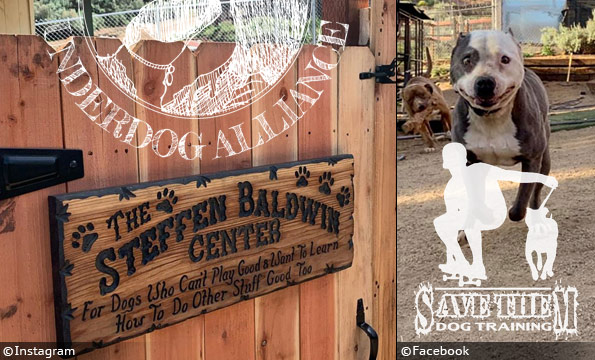
The Steffen Baldwin Center had dogs from Underdog Alliance and Save Them Dog Training.
Indictment Being Drawn Up
By February 2020, when our nation was just entering into Covid-19, prosecutors in Union County were writing the indictment for Steffen Baldwin. The charges end on February 8, 2020. In early March, despite being warned by Kargakos and Logan, Hassen-Auerbach (who was seen with the "two amigos" before the failed start of Columbus Pets Alive), and is the current director of Pima Animal Care Center, invited animal "behavior expert" Baldwin to give a dog safety seminar.
In early July, despite being warned by Kargakos and Logan, Best Friends Animal Society sent a pit bull named "Josh" to Baldwin's facility to be added to his collection of "throwaway dogs," as he called them. By then, Baldwin had at least 23 separate "yards" for his 40 plus reactive dogs and with "so many long-term residents; cohousing became the ultimate goal." It is unknown if Baldwin was euthanizing dogs and pocketing money for this in Acton, but he was on a path to hoarding.
The Arrest and Vindication
On July 23, Baldwin was arrested in Los Angeles County. In a ruse, police in California invited Baldwin to conduct an animal training for the department. When Baldwin arrived, U.S. Marshals arrested him. Baldwin was incarcerated at the North County Correctional Facility in Castaic, which is about 35 miles from the now defunct Baldwin Center in Acton. On or about August 3, Baldwin was transported back to Ohio where he appeared for his first court appearance on August 5.
On August 17, Baldwin made bail and slipped somewhere into the landscape of Union County. His trial is slated for the end of October.
Kargakos was finally vindicated. Rescuers that sent Baldwin unredeemable "boomerang dogs" (dogs continuously returned to shelters due to impulsive aggression) refused to see their role in the problem. One rescuer, Barbara Monroe, admitted to sending Baldwin a "difficult" dog that became stranded at his facility after his arrest, but she failed to realize that false hope and the unwillingness to do the right thing -- euthanize for behavior -- is what fueled Baldwin's scheme.6
Other rescuers, like Emily Randolph Hanson, who brokered the Goober transfer, were also silent about their role in the problem and the felony charges. Hanson ignored all 42 charges and stated on August 7, "I stand with Steffen." Hanson quickly got busy trying to "save" the remaining dogs at Baldwin's ranch. She was thrilled to handoff serial biter "Duke," a dog that had "nowhere to go" after Baldwin was arrested, to a sanctuary crawling with over 200 dogs -- that should end well.
Baldwin's Possible Defense?
One possible defense is that Baldwin will claim he was making the "tough call" for behavioral euthanasia for his "throwaway dogs," when none of his fervent no-kill rescue angel clients would, the very people he scammed. Baldwin, so our theory goes, might claim that he was "stuck between a rock and a hard place" and made many mistakes, he even made bald-faced lies, but that he only put down dogs that could not be rehabbed by his magical rehabilitation powers.
We see two divisions already forming among his delirious "save them all" pit bull rescue fans. There is one type, who was willing to pay Baldwin for magical rehabilitation when there was no logical hope for it, and by doing so abdicated the responsibility in making the "tough call" for behavioral euthanasia. There are other types, like zealot pit bull advocate Arin Greenwood, who helped land Baldwin multiple writing gigs, and recently spelled out a possible defense strategy.
"I think if someone gets charged with animal cruelty for behavioral euthanasia, the consequence is going to be that fewer people will be willing to take on dogs who may be dangerous to give them the chance at rehabilitation and adoption. The risks will be too high. I think it's going to lead, paradoxically, to *more* behavioral euthanasia -- not less." - Arin Greenwood
Suggesting that these dog killings were motivated by the ethical, humane consideration of euthanasia for behavior cannot account for the fact that the killings were done in secret while Baldwin lied to the owners and used the dead dogs as fundraising tools. Ethical, humane euthanasia for behavior cannot account for the felony fraud, tampering, bribery, firearm theft and impersonating a Peace Officer charges -- 29 charges of the 42-count felony indictment.
Steffen Baldwin’s "Save Them Dog" enterprise was founded on the fantasy that he could magically rehabilitate long-stay, unadoptable, boomerang dogs that were unstable and aggressive. His admission to clients that he could not rehabilitate unstable dogs would undermine this fantasy, which was his path to fame and glory. The only theory that accounts for all the charges in the indictment is the one presented by prosecutors after they filed it -- Baldwin's goal was stardom.
Summary
How did Baldwin rise to fame in the pit bull rescue and no-kill spheres while he simultaneously killed up to 18 reactive dogs? He did it by hiding or falsifying these deaths, while pumping out social media posts with hashtags #nokillnation and #savethemall, while lying to dog owners and rescues and while committing over two dozen acts of felony fraud, according to the indictment. Baldwin also got away with it because some rescues allowed him to; they did not ask questions.
Many animal rescue groups were warned that Ohio officials were investigating Baldwin, but they ignored this and kept sending dogs to him, often on a "one-way ticket," leaving the outcome of the dog up to his discretion. While Baldwin secretly killed these dogs, he spoke at a national no-kill conference and wrote pit bull advocacy articles for the Huffington Post. While he secretly killed these dogs, he shopped a TV pilot that he hoped would land him a show on Animal Planet.
Det. Conroy summed up Baldwin's fraud the best. "Every rock I turned over, there was something there, he said. "Every hole I went into led to more holes." The same can be said about the racket of "saving" and trafficking reactive, biting dogs, instead of behavioral euthanasia. Due to the pressures of "save them all," fraud abounds in every area of alleged "reactive dog rehabilitation." Baldwin opted to secretly kill some of these doomed dogs. Purcell and Markwell hoarded them.
We hope that Baldwin is convicted on all charges and will serve sufficient prison time. We thank the owner of Remi and every rescue group named in the indictment for asking questions and demanding answers. The Ohio investigation into Baldwin, which accrued over 13,000 man-hours, proves that police are interested in fraudulent pit bull advocacy and "reactive dog rehabilitation." Steffen Baldwin and Underdog Alliance are now a national example of this cyclical fraud.
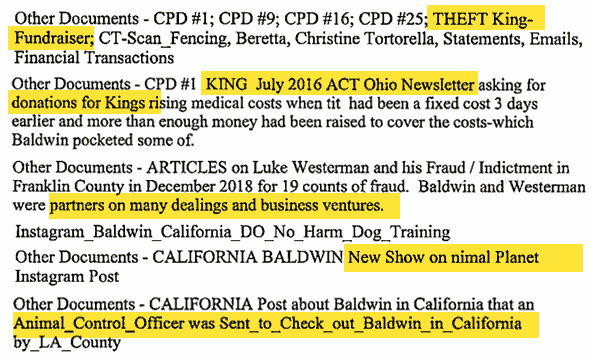
Some items seen on the Supplemental Response to Request for Discovery (08/13/2020).
Epilogue: The Trail of Tears
While we were writing this post, new information came to light about the remaining dogs at Steffen's now defunct sanctuary of sorrow, which apparently worsened after his arrest. On Sunday, a dog that was picked up from the property by his former ranch manager, Carolina Woodson, died of heatstroke while being transported. Woodson claimed to not know how bad the situation was, despite having previously lived on the property for months. She also did not seek veterinary care.
Sharon Logan of Paw Protectors Rescue called Woodson out and was blocked by her. "We also got blocked by the former ranch manager at Steffen’s place for asking, after she stated she would be taking action now that she was aware of how bad the situation is," Logan said. "Perhaps if she had of spoken up when she left her position in Acton in November regarding the conditions at the ranch then, which are basically the same as today, the dog below would still be alive today."
Meanwhile, Saskia, who obtained the property and co-founded Underdog Alliance with Baldwin, is AWOL while rescues try to pick up their dogs.
Logan asked, "Who still thinks that a dog that sat in a kennel pretty much 24/7 for 2 plus years not getting the mental or physical stimulation this dog needed, plus being subjected to the elements of 110 degree heat and ultimately died of heatstroke was the better way to go than humane euthanasia at the shelter?" Los Angeles County Animal Control sent officers out to the property to "take any necessary action" and have been in communication with Ohio law enforcement.
Related articles:
07/31/20: 2020 Edition: 125 Behavior Terms for Shelter Dogs Decoded that Mask Aggression...
02/10/19: Unmasking a Con: How a Sudden Pit Bull Activist Parleyed Role into Top Job...
09/20/16: What's Behind the Click Bait Web Advertisements of Aggressive Shelter Dogs...


